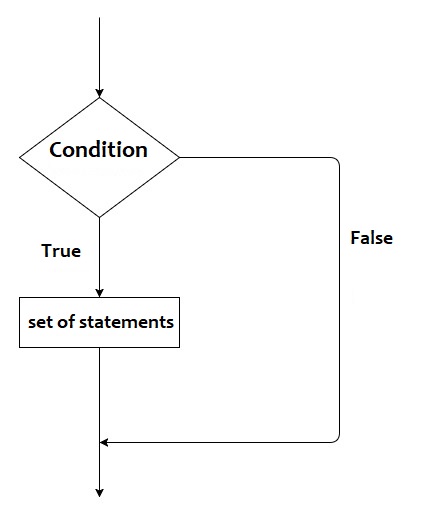Home »
Golang
Golang if statement
Last Updated : April 19, 2025
Golang if statement
The if statement is the simplest decision-making statement. It is used to check the given condition. If the given condition is true then the set of statements will be executed. If the condition is false then the set of statements will not be executed.
Syntax
if(condition){
// set of statements
}
or
if condition {
// set of statements
}
Flow chart

Example 1
Input the age of a person and check whether the person is eligible for voting or not.
In this program, we will use two if statements to check whether the person is eligible for voting or not.
// Golang program to demonstrate the
// example of the simple if statement
package main
import "fmt"
func main() {
var age int
fmt.Print("Input the age: ")
fmt.Scanf("%d", &age)
if age >= 18 {
fmt.Println("Person is eligible for voting.")
}
if age < 18 {
fmt.Println("Person is not eligible for voting.")
}
}
Output
RUN 1:
Input the age: 32
Person is eligible for voting.
RUN 2:
Input the age: 12
Person is not eligible for voting.
Example 2
Input an integer value to check whether the given number is positive or negative.
In this program, we will use two if statements to check whether the given number is positive or negative.
// Golang program to demonstrate the
// example of the simple if statement
package main
import "fmt"
func main() {
var num int
fmt.Print("Input an integer number: ")
fmt.Scanf("%d", &num)
if num >= 0 {
fmt.Println("Number is positive.")
}
if num < 0 {
fmt.Println("Number is negative.")
}
}
Output
RUN 1:
Input an integer number: 108
Number is positive.
RUN 2:
Input an integer number: -10
Number is negative.
Go If Statement Exercise
Select the correct option to complete each statement about if statements in Go.
- The keyword ___ is used to start an if statement in Go.
- The condition in a Go if statement must be enclosed in ___.
- The keyword ___ is used to provide an alternative block of code if the if statement condition is false.
Advertisement
Advertisement